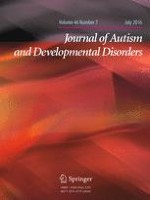25-02-2016 | Brief Report
Brief Report: Sensory Reactivity in Children with Phelan–McDermid Syndrome
Gepubliceerd in: Journal of Autism and Developmental Disorders | Uitgave 7/2016
Log in om toegang te krijgenAbstract
Phelan–McDermid syndrome (PMS), a monogenic form of autism spectrum disorder (ASD), results from deletion or mutation of the SHANK3 gene. Atypical sensory reactivity is now included in the diagnostic criteria for ASD. Examining the sensory phenotype in monogenic forms of ASD, such as PMS, may help identify underlying mechanisms of sensory reactivity. Using the Short Sensory Profile, the current study compared sensory reactivity in 24 children with PMS to 61 children with idiopathic ASD (iASD). Results suggest that children with PMS show more low energy/weak symptoms and less sensory sensitivity as compared to children with iASD. This study is the first to demonstrate differences in sensory reactivity between children with PMS and iASD, helping to refine the PMS phenotype.
